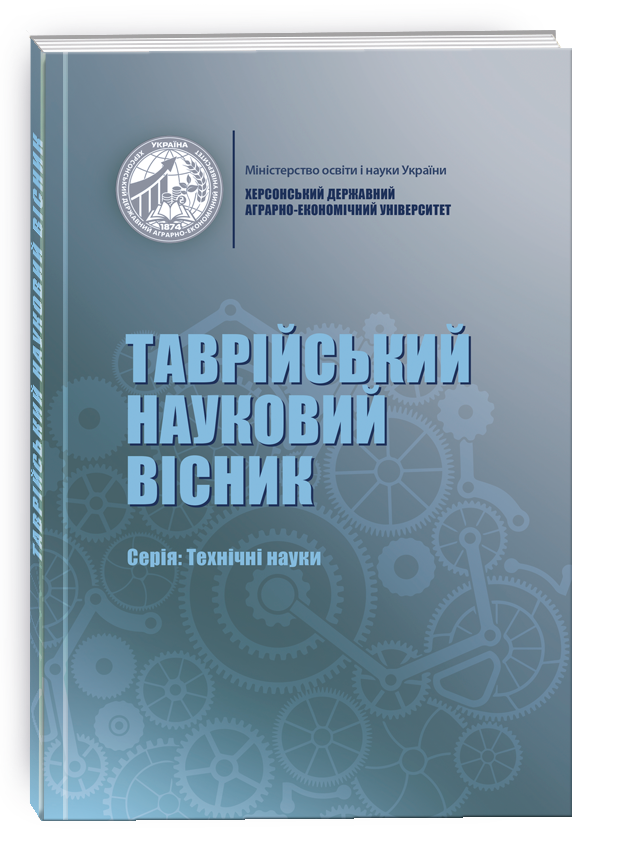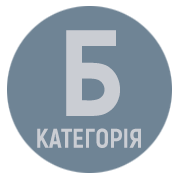ОГЛЯД СУЧАСНИХ АЛГОРИТМІВ ГЛИБИННОГО НАВЧАННЯ ДЛЯ КЛАСИФІКАЦІЇ ЗОБРАЖЕНЬ
Ключові слова:
класифікація зображень, згорткові нейронні мережі, трансформери, гібридні архітектури, штучні нейронні мережі, механізм уваги, обчислювальна складність, глибинне навчанняАнотація
Задача класифікації зображень є однією з актуальних проблем сучасного програмування та вже тривалий час перебуває у центрі наукових досліджень. З моменту створення алгоритмів штучних нейронних мереж (ANN – Artificial Neural Network) відбувся бурхливий розвиток і адаптація ANN під задачу класифікації зображень. Впровадження згорткових нейронних мереж (CNN) дало суттєвий поштовх розвитку цієї галузі, а згодом інтеграція механізмів уваги сприяла появі нових архітектур, що поєднують згорткові мережі з механізмом уваги.Це дозволило адаптувати механізм уваги для задач класифікації зображень та сприяло розвитку відповідних моделей. Особливу увагу нині приділяють моделям, що використовують трансформери для класифікації зображень, а також гібридним архітектурам, які поєднують згорткові нейронні мережі з трансформерами. Напрям гібридних моделей вважається одним із найперспективніших у розвитку алгоритмів класифікації. У цій статті проведено аналіз основних архітектур нейронних мереж для розв’язання задачі класифікації зображень, а також здійснено порівняння їхньої ефективності та обчислювальної складності. Також розглянуто основні тренди, які визначають напрямки дослідження і підсумовано ключові відмінності та застосування цих моделей. Наукова новизна цієї статті полягає у комплексному аналізі ефективності та обчислювальної складності сучасних архітектур класифікації зображень, зокрема трансформерних моделей та їхніх гібридних варіацій. У результаті проведеного аналізу встановлено, що гібридні архітектури, які поєднують згорткові нейронні мережі з механізмом уваги, є перспективним напрямом у задачах класифікації зображень.Здійснене порівняння різних архітектур дозволяє окреслити ключові тенденції розвитку методів класифікації зображень та їхнє застосування у практичних задачах.
Посилання
Multilayer perceptron: architecture optimization and training / H. Ramchoun et al. International journal of interactive multimedia and artificial intelligence. 2016. Vol. 4, no. 1. P. 26. URL: https://doi.org/10.9781/ijimai.2016.415 (date of access: 06.05.2025).
Object detection with deep learning: a review / Z.-Q. Zhao et al. IEEE transactions on neural networks and learning systems. 2019. Vol. 30, no. 11. P. 3212–3232. URL: https://doi.org/10.1109/tnnls.2018.2876865 (date of access: 06.05.2025).
Gradient-based learning applied to document recognition / Y. Lecun et al. Proceedings of the IEEE. 1998. Vol. 86, no. 11. P. 2278–2324. URL: https://doi.org/10.1109/5.726791 (date of access: 19.05.2025).
ImageNet large scale visual recognition challenge / O. Russakovsky et al. International journal of computer vision. 2015. Vol. 115, no. 3. P. 211–252. URL: https://doi.org/10.1007/s11263-015-0816-y (date of access: 19.05.2025).
Deep residual learning for image recognition / K. He et al. 2016 IEEE conference on computer vision and pattern recognition (CVPR), Las Vegas, NV, USA, 27–30 June 2016. 2016. URL: https://doi.org/10.1109/cvpr.2016.90 (date of access: 19.05.2025).
Vaswani A. Attention is all you need. NIPS’17: proceedings of the 31st international conference on neural information processing systems. 2017. URL: https://arxiv.org/abs/1706.03762.
An image is worth 16x16 words: transformers for image recognition at scale / A. Dosovitskiy et al. URL: https://arxiv.org/abs/2010.11929
CoAtNet: marrying convolution and attention for all data sizes / Z. Dai et al. URL: https://arxiv.org/abs/2106.04803
Going deeper with convolutions / C. Szegedy et al. URL: https://arxiv.org/abs/1409.4842
Sharma N., Jain V., Mishra A. An analysis of convolutional neural networks for image classification. Procedia computer science. 2018. Vol. 132. P. 377–384. URL: https://doi.org/10.1016/j.procs.2018.05.198 (date of access: 19.05.2025).
Dumoulin V., Visin F. A guide to convolution arithmetic for deep learning. URL: https://arxiv.org/abs/1603.07285
A Comparison of Pooling Methods for Convolutional Neural Networks / A. Zafar et al. Applied Sciences. 2022. Vol. 12, no. 17. P. 8643. URL: https://doi.org/10.3390/app12178643 (date of access: 19.05.2025).
LeCun Y., Kavukcuoglu K., Farabet C. Convolutional networks and applications in vision. 2010 IEEE international symposium on circuits and systems – ISCAS 2010, Paris, France, 30 May – 2 June 2010. 2010. URL: https://doi.org/10.1109/iscas.2010.5537907 (date of access: 19.05.2025).
Sharma S., Sharma S., Athaiya A. ACTIVATION FUNCTIONS IN NEURAL NETWORKS. International Journal of Engineering Applied Sciences and Technology. 2020. Vol. 04, no. 12. P. 310–316. URL: https://doi.org/10.33564/ijeast.2020.v04i12.054 (date of access: 19.05.2025).
Review of image classification algorithms based on convolutional neural networks / L. Chen et al. Remote sensing. 2021. Vol. 13, no. 22. P. 4712. URL: https://doi.org/10.3390/rs13224712 (date of access: 19.05.2025).
A comprehensive survey of loss functions in machine learning / Q. Wang et al. Annals of data science. 2020. URL: https://doi.org/10.1007/s40745-020-00253-5 (date of access: 19.05.2025).
Soydaner D. A comparison of optimization algorithms for deep learning. International journal of pattern recognition and artificial intelligence. 2020. Vol. 34, no. 13. P. 2052013. URL: https://doi.org/10.1142/s0218001420520138 (date of access: 19.05.2025).
Islam M. R., Matin A. Detection of COVID 19 from CT Image by The Novel LeNet-5 CNN Architecture. 2020 23rd international conference on computer and information technology (ICCIT), DHAKA, Bangladesh, 19–21 December 2020. 2020. URL: https://doi.org/10.1109/iccit51783.2020.9392723 (date of access: 19.05.2025).
Krizhevsky A., Sutskever I., Hinton G. E. ImageNet classification with deep convolutional neural networks. Communications of the ACM. 2017. Vol. 60, no. 6. P. 84–90. URL: https://doi.org/10.1145/3065386 (date of access: 19.05.2025).
Simonyan K., Zisserman A. Very deep convolutional networks for large-scale image recognition. URL: https://arxiv.org/abs/1409.1556.
Rethinking the inception architecture for computer vision / C. Szegedy et al. 2016 IEEE conference on computer vision and pattern recognition (CVPR), Las Vegas, NV, USA, 27–30 June 2016. 2016. URL: https://doi.org/10.1109/cvpr.2016.308 (date of access: 19.05.2025).
Ioffe S., Szegedy C. Batch normalization: accelerating deep network training by reducing internal covariate shift. URL: https://arxiv.org/abs/1502.03167.
Inception-v4, inception-resnet and the impact of residual connections on learning / C. Szegedy et al. Proceedings of the AAAI conference on artificial intelligence. 2017. Vol. 31, no. 1. URL: https://doi.org/10.1609/aaai.v31i1.11231 (date of access: 19.05.2025).
Lin M., Chen Q., Yan S. Network in network. URL: https://arxiv.org/abs/1312.4400
Densely connected convolutional networks / G. Huang et al. 2017 IEEE conference on computer vision and pattern recognition (CVPR), Honolulu, HI, 21–26 July 2017. 2017. URL: https://doi.org/10.1109/cvpr.2017.243 (date of access: 19.05.2025).
Brauwers G., Frasincar F. A general survey on attention mechanisms in deep learning. IEEE transactions on knowledge and data engineering. 2021. P. 1. URL: https://doi.org/10.1109/tkde.2021.3126456 (date of access: 19.05.2025).
Residual attention network for image classification / F. Wang et al. 2017 IEEE conference on computer vision and pattern recognition (CVPR), Honolulu, HI, 21–26 July 2017. 2017. URL: https://doi.org/10.1109/cvpr.2017.683 (date of access: 19.05.2025).
Squeeze-and-Excitation networks / J. Hu et al. IEEE transactions on pattern analysis and machine intelligence. 2020. Vol. 42, no. 8. P. 2011–2023. URL: https://doi.org/ 10.1109/tpami.2019.2913372 (date of access: 19.05.2025).
BAM: bottleneck attention module / J. Park et al. URL: https://arxiv.org/abs/1807.06514.
CBAM: convolutional block attention module / S. Woo et al. Computer vision – ECCV 2018. Cham, 2018. P. 3–19. URL: https://doi.org/10.1007/978-3-030-01234-2_1 (date of access: 19.05.2025).
SqueezeNet: AlexNet-level accuracy with 50x fewer parameters and <0.5MB model size / F. N. Iandola et al. URL: https://arxiv.org/abs/1602.07360
MobileNets: efficient convolutional neural networks for mobile vision applications / A. G. Howard et al. URL: https://arxiv.org/abs/1704.04861
MobileNetV2: inverted residuals and linear bottlenecks / M. Sandler et al. URL: https://arxiv.org/abs/1801.04381
Searching for MobileNetV3 / A. Howard et al. 2019 IEEE/CVF international conference on computer vision (ICCV), Seoul, Korea (South), 27 October – 2 November 2019. 2019. URL: https://doi.org/10.1109/iccv.2019.00140 (date of access: 19.05.2025).
Elsken T., Metzen J. H., Hutter F. Neural architecture search. Automated machine learning. Cham, 2019. P. 63–77. URL: https://doi.org/10.1007/978-3-030-05318-5_3 (date of access: 19.05.2025).
NetAdapt: platform-aware neural network adaptation for mobile applications / T.-J. Yang et al. Computer vision – ECCV 2018. Cham, 2018. P. 289–304. URL: https://doi.org/10.1007/978-3-030-01249-6_18 (date of access: 19.05.2025).
ShuffleNet: an extremely efficient convolutional neural network for mobile devices / X. Zhang et al. 2018 IEEE/CVF conference on computer vision and pattern recognition (CVPR), Salt Lake City, UT, 18–23 June 2018. 2018. URL: https://doi.org/10.1109/cvpr.2018.00716 (date of access: 19.05.2025).
Tan M., Le Q. V. EfficientNet: rethinking model scaling for convolutional neural networks. URL: https://arxiv.org/abs/1905.11946
Trockman A., Kolter J. Z. Patches are all you need?. URL: https://arxiv.org/abs/2201.09792
Swin transformer: hierarchical vision transformer using shifted windows / Z. Liu et al. 2021 IEEE/CVF international conference on computer vision (ICCV), Montreal, QC, Canada, 10–17 October 2021. 2021. URL: https://doi.org/10.1109/iccv48922.2021.00986 (date of access: 19.05.2025).
Scaling local self-attention for parameter efficient visual backbones / A. Vaswani et al. 2021 IEEE/CVF conference on computer vision and pattern recognition (CVPR), Nashville, TN, USA, 20–25 June 2021. 2021. URL: https://doi.org/10.1109/cvpr46437.2021.01270 (date of access: 19.05.2025).







